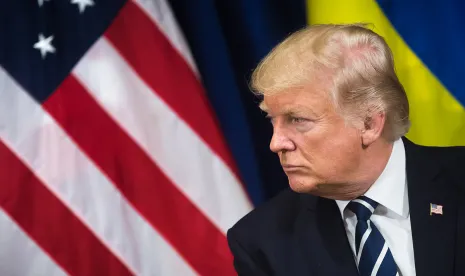President Trump on 1 May 2020 signed an Executive Order (“Order”) declaring a national emergency over threats to the U.S. bulk-power grid from foreign adversaries that may seek to commit malicious acts against the United States and its population including malicious cyber activities. While the Order does not directly impose any restrictions and does not identify any foreign adversary powers or entities, it paves the way to future prohibitions on imports and acquisition of foreign-produced equipment specifically identified as posing a danger to the security of the U.S. bulk power system. China and Russia are widely seen as the primary targets of the Order.
1. Authorization to Prohibit Specific Transactions Involving the U.S. Bulk Power System
The Order authorizes the Secretary of Energy (the “Secretary”) to prohibit the “acquisition, importation, transfer, or installation of any bulk-power system electric equipment” (collectively, a “transaction”) that involves equipment designed, developed, manufactured, or supplied by persons owned or controlled by or subject to the jurisdiction or direction of a “foreign adversary,” and the transaction poses either:
-
“an undue risk of sabotage to or subversion of the design, integrity, manufacturing, production, distribution, installation, operation, or maintenance of the bulk-power system in the United States”;
-
“an undue risk of catastrophic effects on the security or resiliency of United States critical infrastructure or the economy of the United States”; or
-
“an unacceptable risk to the national security of the United States or the security and safety of United States persons.”
In lieu of prohibition, the Secretary may require parties to adopt mitigation measures to alleviate concerns as a precondition to approval of a transaction.
The Secretary is required to promulgate implementing rules and regulations within 150 days of the Order, or by 28 September 2020.
2. What Is the Bulk Power System and What Equipment Is Covered?
The Order defines “bulk-power system” to mean “(i) facilities and control systems necessary for operating an interconnected electric energy transmission network (or any portion thereof); and (ii) electric energy from generation facilities needed to maintain transmission reliability,” including transmission lines rated at 69,000 volts (69 kV) or more. Facilities used in the local distribution of electricity are excluded. Although not clear, this would appear to capture “peaker” generation facilities (regardless of the fuel type used) and could also be construed to apply to storage and hybrid generation plus storage facilities.
“Bulk-power system electric equipment” is defined as “items used in bulk-power system substations, control rooms, or power generating stations, including reactors, capacitors, substation transformers, current coupling capacitors, large generators, backup generators, substation voltage regulators, shunt capacitor equipment, automatic circuit reclosers, instrument transformers, coupling capacity voltage transformers, protective relaying, metering equipment, high voltage circuit breakers, generation turbines, industrial control systems, distributed control systems, and safety instrumented systems.” The Order also authorizes the Secretary to publish a list of approved equipment and vendors that are pre-qualified for future transactions.
3. “Foreign Adversary” Not Defined
As noted, the Order does not identify specific foreign adversary countries, but defines the term broadly as “any foreign government or foreign non-government person engaged in a long term pattern or serious instances of conduct significantly adverse to the national security of the United States or its allies or the security and safety of United States persons.” The Secretary is given wide latitude to make foreign adversary determinations on a case-by-case basis, with the expectation that Chinese and Russian entities are the primary target.
4. Some Uncertainty Over Effective Date
The Order applies to any transaction “initiated after” 1 May 2020, however, the Order applies notwithstanding any contract entered into or licenses or permitting granted prior to that date. This suggests that “initiation” means a further concrete project step, such as procurement of equipment or commencement of construction. But as noted immediately below, the Order appears to create the authority for the Secretary to review currently installed bulk-power assets and take action to mitigate national security threats that the Order is intended to target.
5. Identification of Electrical Equipment from Foreign Adversaries
The Order instructs the Secretary “as soon as practicable” to identify bulk-power system electric equipment designed, developed, manufactured, or supplied by persons owned by, controlled by, or subject to the jurisdiction or direction of a foreign adversary that presents any of the risks identified in (A) through (C) in Section 1 above and to “develop recommendations on ways to identify, isolate, monitor, or replace such items as soon as practicable, taking into consideration overall risk to the bulk-power system.” The fact that monitoring and replacement is mentioned suggests that the Secretary may conduct a look-back of installed assets, including those that pre-date the Order, presenting the possibility of retroactive mitigation measures being required of operators using those assets.
6. Similarities to May 2019 Information and Communications Technology and Services Supply Chain Executive Order
We note that the Order is very similar in scope and wording to Executive Order 13873, “Securing the Information and Communications Technology and Services Supply Chain” (“EO 13873”), signed by President Trump signed on 15 May 2019, which authorizes the Commerce Department to prohibit transactions involving information and communications technology, hardware, and services from foreign adversaries that pose a threat to U.S. infrastructure and national security. The Commerce Department issued proposed regulations implementing Executive Order 13873 on 27 November 2019 (which we covered in our prior alert) that would establish procedures for identifying specific transactions to be prohibited, including for the government to receive information on specific transactions from private parties.
If regulations implementing the Order incorporate the same procedures as the Commerce Department’s proposed EO 13873 regulations, this may present the possibility of companies submitting information on competitors’ transactions involving foreign-supplied bulk-power system electric equipment in order to gain an edge in the market. (Also, given that the Commerce Department has yet to issue final implementing rules almost a year after EO 13873 suggests there may be a significant delay before any prohibitions under the Order are effective.)
7. Creation of Task Force
Finally, the Order establishes a Task Force on Federal Energy Infrastructure Procurement Policies Related to National Security. This task force will be chaired by the Secretary and include representatives from the Departments of Defense, Interior, Commerce, and Homeland Security, and the Directors of National Intelligence and the Office of Management and Budget, and will be tasked, among other duties, with the development of energy infrastructure procurement policies and evaluation of methods and criteria used to incorporate national security concerns into energy security and cybersecurity policymaking.




 />i
/>i

